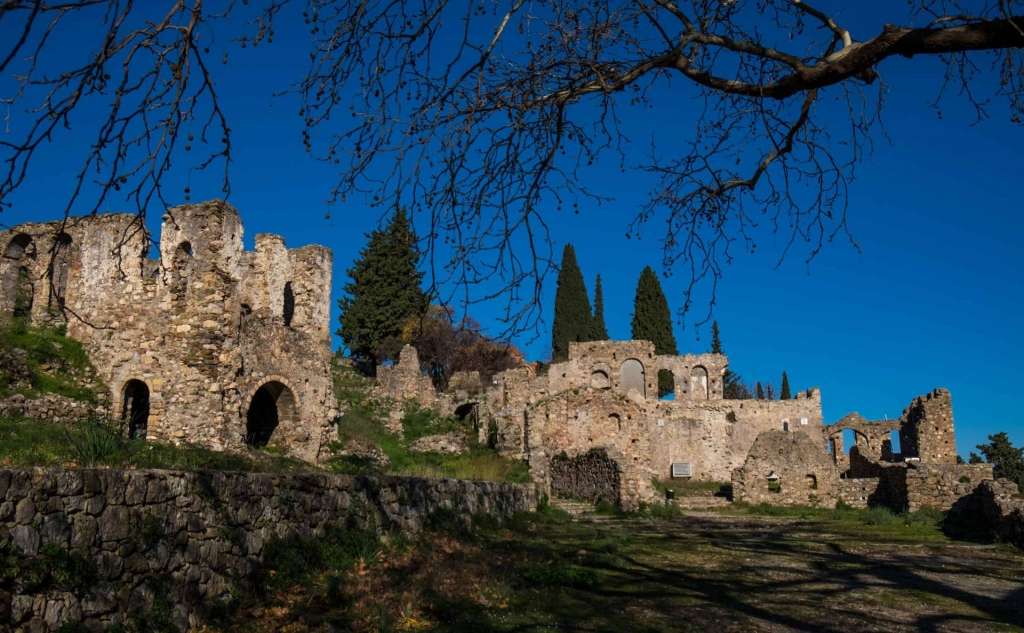Old Karyoupolis

The ruined Byzantine city of Old Karyoupolis is located at the top of a hill of strategic significance, west of Drosopigi. The location is in the centre of the distance that separates the Laconian from the Messinian Gulf. The first written reference about it is from the 8th century, but the city pre-existed. In 821, monk Nikitas settled there for a year, where he wrote the pastoral work "The life of Saint Filaretos".
Old Karyoupolis developed in the 15th century when the Medieval city was a vital Byzantine Centre of Mani. After the Frankish rule, at the beginning of the prosperity of Mystras, Karyoupolis was an important city for the Palaeologus family. According to traveller Ciriaco de ’Pizzicolli (known as Kyriakos the Agonite), who visited the town in 1447, Constantine Palaeologus maintained a guard and a general in Karyoupolis. George (Solianos) Sofianos is mentioned as the commander-in-chief during his time. From 1618, when we have the first written reference about the diocese of Karyoupolis, it was a religious centre in the area until the end of the 17th century, when it was renamed the diocese of Gythio in 1833. Also, the Fokas family (descendants of the Byzantine family), who took refuge there after the fall, lived in Old Karyoupolis. The colonisation and other progressions in the area resulted in the gradual desolation of the city. During the second half of the 18th century, the inhabitants settled further east, in the area of Miniakova, which was renamed Karyoupolis and still exists today.
Old Karyoupolis remained the stronghold and the shield of resistance of the Greeks to the invasions of the various hostile races. Visitors can see many monuments on the hill, some identified and others unexplored. There are more than ten churches of the Early Byzantine and Late Byzantine times. In fact, three of the Late Byzantine churches (Agios - Saint Nikolaos, Agios Dimitrios and Agios Georgios) have been designated monuments by the Archaeological Service. These are single-aisled temples with domes, which are quite common in Mani, and date, respectively, back to the 13th, 14th and 15th centuries. Visitors can also see the ruins of dozens of houses, buildings of all uses, fortified towers, as well as the remains of buildings of Roman times. Noteworthy is the existence of a windmill and water tanks, known as Gisternes. The windmill is a circular structure with a preserved half wall on the north and west sides. Sections of the constructed road that led to the old town are also preserved. Carved on a stone is the chronological inscription 1749 AD, which is maintained and confirms the construction of the Kavalierakis house.



